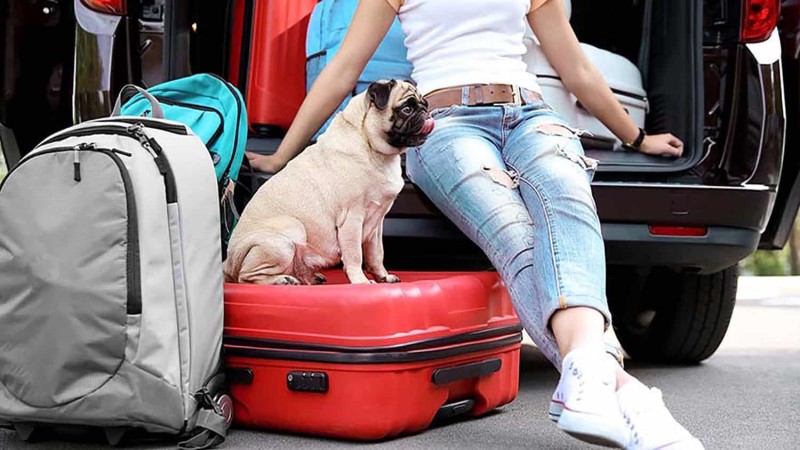We have a lot of training items on our “checklist” to ensure that we have well-mannered, portable canine companions. We want to take our pups for adventures in the world, such as on hikes, to friends’ and family members’ homes, for veterinary care, and on vacation. In addition to teaching our dogs how to settle down in public on a mat, how to be crated, and how to behave around guests, we also need to teach our dogs how to behave while being transported in a vehicle.
We need transportation to be safe – we can’t have our dogs running laps in the vehicle. Not only is this distracting for the driver, but it may also put your hound in a poor balance position, which could lead to serious injury if the car stops suddenly. Start off on the right paw by training your new dog how to correctly ride in the car right away or polish up manners for a pooch with less desirable automobile etiquette.
Assign a Designated Place for Your Dog
Should your dog be in their crate, lying calmly on a towel in the backseat, or secured by a canine seatbelt? We’ll call this designated area the “place” for the rest of the blog. If you want to have your dog lying on a towel, you may want to teach the mat command and use that verbal cue to get your dog into position. If you want to use a seatbelt, this article breaks down some perceived pros and cons of some popular seatbelts. If you’re going to use a crate, be sure the crate is properly secured so it does not move.
Be Consistent
From here on out, only allow your dog to ride in their established place; this means that no family members may allow the dog to pace around the vehicle or sit on the driver’s lap.
Practice Having Your Dog in that Designated Place
For example, just sit for 30 seconds in the driveway or garage with your dog in that place in the car. Give your dog treats for remaining calm in their place. Remember, we use treats to reinforce good behaviors so these behaviors are repeated. Release your dog (“ok” or “done”) out of the car when the training session is over. For more help with safe exits out of the car, see this blog. Slowly increase the duration of staying in the place while the car is not in motion. During some training sessions in which you do not actually drive anywhere, turn on the car engine so your dog gets accustomed to the car vibrating while they are in their place.
Start with Short Trips
Drive your car somewhere and gradually increase the duration of those trips. Teach your dog that they must stay in their established place while the car is in motion. Back down the driveway, go around the block, drive half a mile, drive a mile, and so on. If possible, have another human in the vehicle while you drive. This extra human can deliver treats to reward serene dog behavior in the established place. If you have a canine battling motion sickness, do not gives treats during the ride – just use praise and petting (if possible). If you need help overcoming canine motion sickness, please see this blog.
Stay Positive and Calm in the Car
Keep your tone positive and breathe calmly. Our dogs take cues from us; thus, if you’re content, your dog is more likely to be content. If you’re nervous and stressed, your dog will follow suit. You may make your dog more comfortable in the car by having their favorite blanket or toy along (a toy with which they simply co-exist and snuggle). In addition, exercise your dog before car training sessions and before car trips so that they are more likely to be able to relax.
Exercise Additional Safety Measures
Ensure airflow is adequate for your pooch. Do not have anything near your dog (whether or not they are in the crate) that could be come tangled, such as a leash. Keep windows almost all the way up to prevent your (uncrated) dog from the temptation of breaking their place and sticking their head out of the window. Dogs with their heads hanging out of car windows are at risk for jumping out, falling out, or getting hit in the eyes, nose, or ears by dangerous debris (small rocks, litter, dirt, etc.).
Enjoy safe travels!
Take some of the stress out of pet ownership with Accident & Illness Coverage from AKC Pet Insurance (underwritten by Independence American Insurance Company). Our pet insurance plans are designed to be there when you need them, allowing you to focus more on the health of your pet and less on costly veterinary bills. Click here for a quote today!
,

